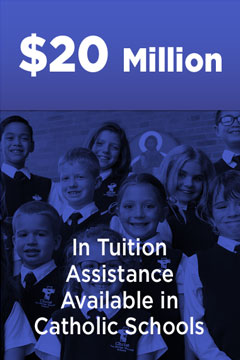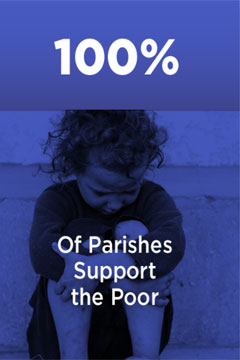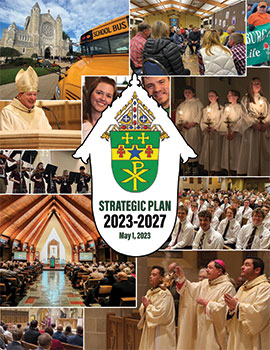
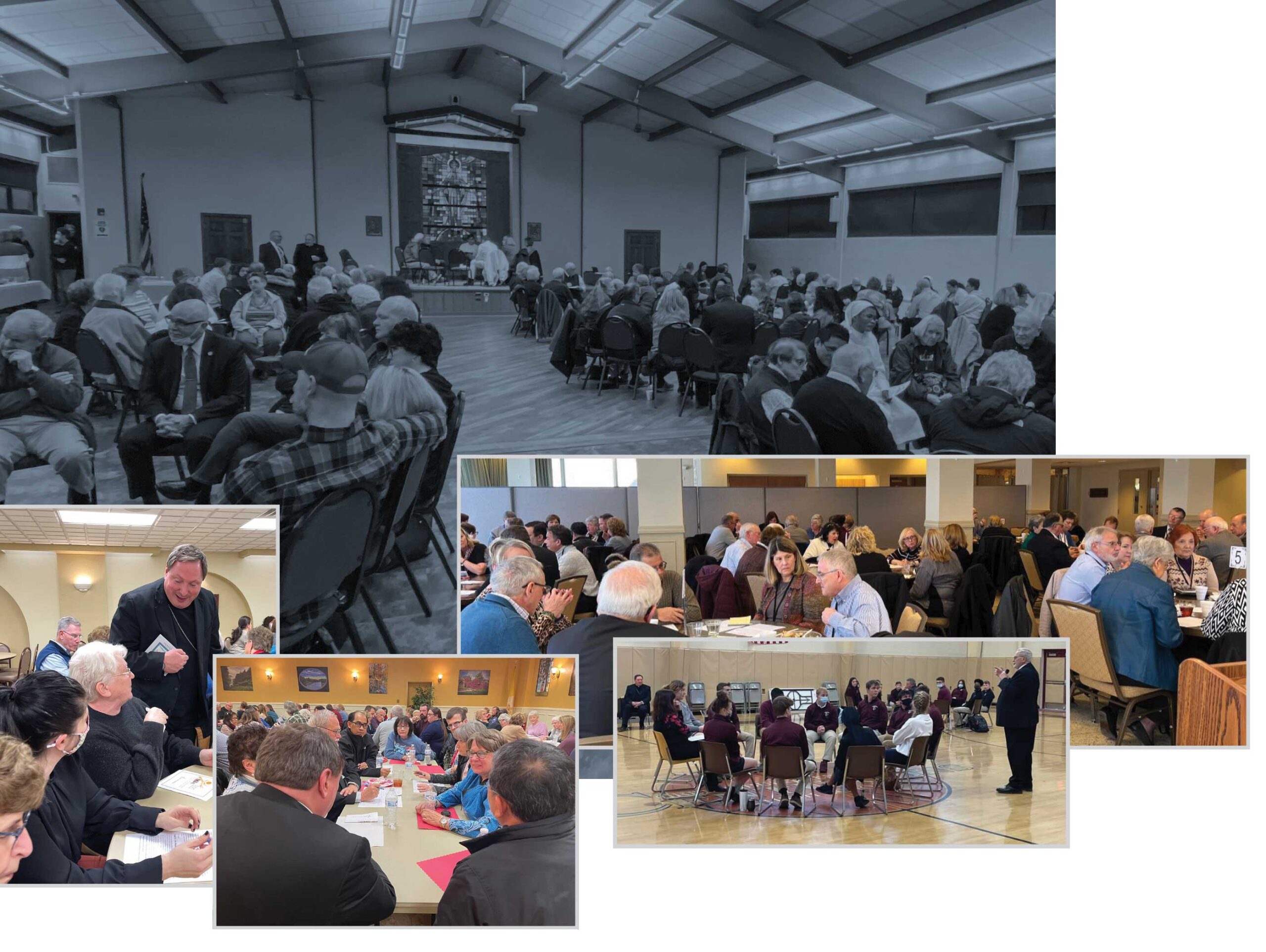

STRATEGIC PILLARS
5 BUILDING CONNECTIVITY
GOAL
Focus on the less connected.
OBJECTIVE 1
Empower Catholic Charities to assist the poor and energize Catholic schools to create new disciples.
OBJECTIVE 2
Adopt technology tools to help us better know our parishioners and who we have lost and how we can better connect with them.
OBJECTIVE 3
Implement new communication mediums realizing the internet is now the front door to our Church.
OBJECTIVE 4
Continue to prioritize the safety of youth and volunteer adults.
Data plays an important role in this strategic pillar. The Diocese must optimize parishioner relationship management tools and encourage parishes to invest time and resources into their databases. These technology tools will help us know better who we are serving and who we are not. By aggregating that data, major outreach ministries can begin, bridges can be built and those who have left can once again be invited to rejoin our faith community.
Yearly data about website and social media traffic will help us to determine who is searching for us and why. Our front door to the faith community is both relational and virtual, so we must make sure we are on the cutting edge of connectivity.
In the fall of 2021, and as part of both the Synodal and strategic planning processes for Catholic Charities of the Diocese of Greensburg, a survey of stakeholders regarding the pressing needs of our community was sent to staff, volunteers, clergy and parishioners. Catholic Charities received 3,000 responses from across the four counties of the Diocese. The results are as follows:
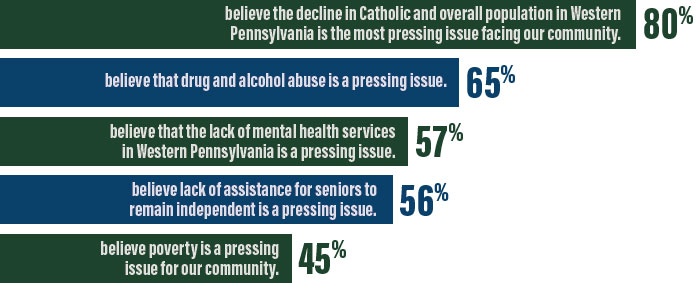
According to the youth and young adult survey, Catholic Schools are critical to the formation of disciples:
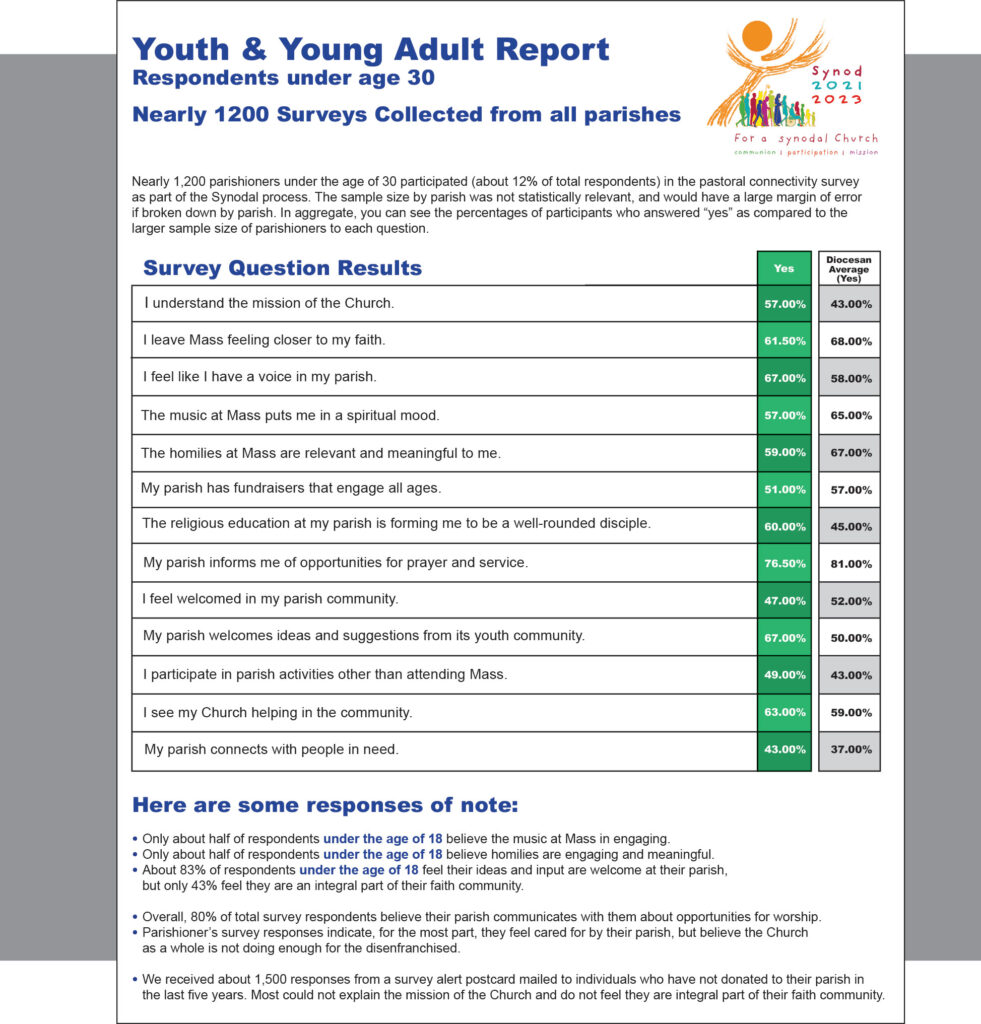
Regarding the protection of children and vulnerable adults, Bishop Kulick has said publicly that he will work tirelessly with all key collaborators and advisory bodies to continue to follow the Diocesan Policies put in place by his predecessors as well as monitor the best ways possible to bring reconciliation and healing to those effected by these actions. This includes monitoring and updating as necessary our safe environment policies and regulations to continue to ensure that our parishes, schools, and organizations are the safest places for our children, youth and vulnerable adults.



